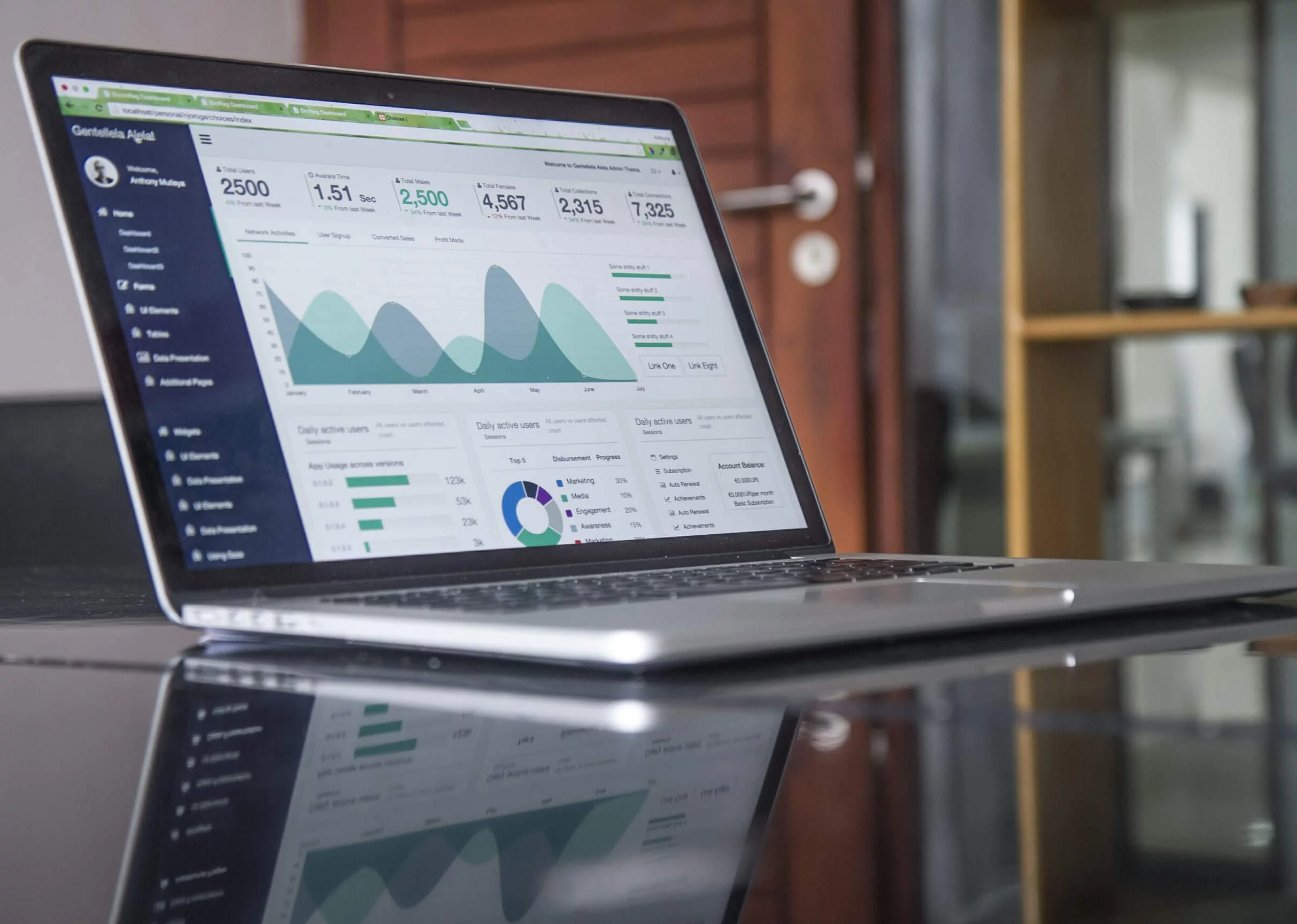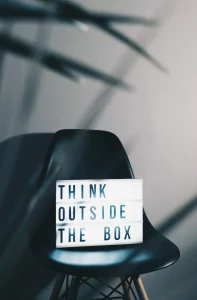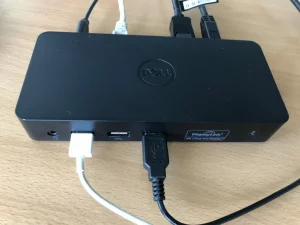In sports, you can measure yourself against best marks or direct competition. In online marketing, however, it is difficult to evaluate your own performance because comparative values are usually lacking. This is not the case for push marketing: the Signalize Benchmark Report provides orientation and also shows concrete levers for optimisation. The report also proves the channel’s potential for success. On average, registration rates of over 7 percent and average click rates of almost 3.5 percent can be achieved. Even registration rates of up to 27.3 percent and click rates of over 20 percent are possible.
The benchmark report is based on a representative sample of 25 million opt-in invitations and 50 million push messages sent via Signalize in 2020.
Download the full Web & Wallet Push Benchmark Report 2021 for free and use the valuable insights for your push marketing:
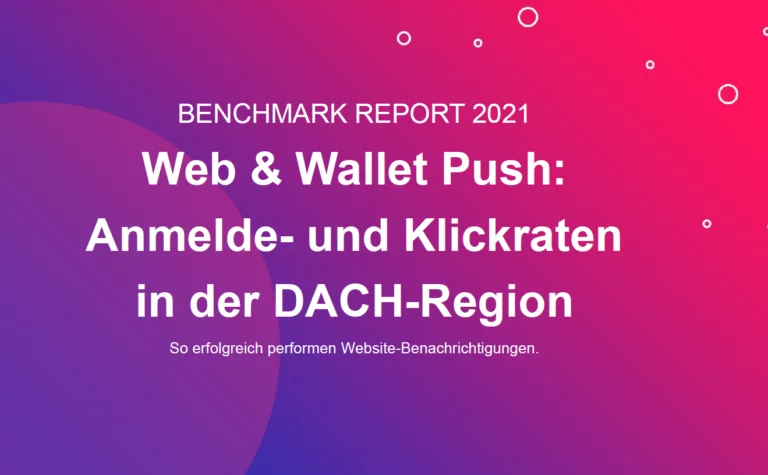
These eleven tips will give you the most important insights:
1. Integrate the invitation to receive web push messages into your own domain
You generate three times more registrations via your own domain than via a subdomain. In order to be able to send notifications via your own domain, all you have to do is store a special file in the main directory of the website. A small effort with a big effect!

2. Use Wallet Push to reach iOS users as well
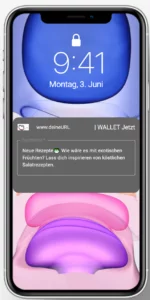
More and more users today are mobile. Web push is supported by all major browsers on desktops and smartphones, but not on iOS devices like the iPhone. With Wallet Push, you can complement your web push marketing to reach all website users and invite them to receive your push notifications. After all, the sign-up rate for Wallet Push is 11.5 percent, which is almost twice as high as with pure web push.
3. Use invitation banners for the highest possible opt-in rate
To attract web push subscribers, website operators most often use the browser’s simple sign-up dialogues (50.7 percent), invitation boxes (17.5 percent) or invitation banners (31.8 percent). The highest opt-in rate can clearly be achieved with invitation banners. At 20.8 percent, this is more than twice as high as with the invitation box at 6.5 percent and the simple browser dialogue at 8.0 percent.

4. Increase the registration rate with a selection of topics
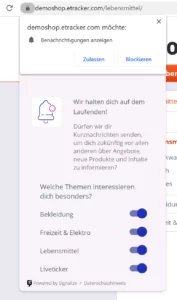
Personalisation is also an important success criterion in web push marketing. Therefore, the opt-in rates are higher when the potential subscriber is offered a choice of topics (8.1 percent) than with invitations that do not offer a selection option (7.1 percent). However, you should only offer a topic selection if you are addressing very different content. Then the effort and benefit of topic-specific push messages are in a good ratio.
5. Invite visitors to web push as soon as they enter your website
It may seem obvious to give a website visitor some time to look around before inviting them. But in fact, delaying the invitation reduces the opt-in rate by at least 15 percent. This may be because users are increasingly accustomed to finding consent dialogues immediately upon arrival on a website. In addition, they are still orientating themselves on the website at that moment, which is why they also find an invitation less annoying than later, for example, when they are already directly in the shopping process.

6. Choose delivery days randomly throughout the week
Push notifications have similar click rates on all days of the week. The click rates are slightly higher on Tuesdays, Thursdays and Sundays. The majority of all short messages via web push are sent on Wednesdays. So you have the opportunity to score equally well with push messages on every day of the week. After all, most users are also online every day and interact with short messenger messages almost around the clock. Consequently, they accept the short messages via web push just as naturally and at any time.
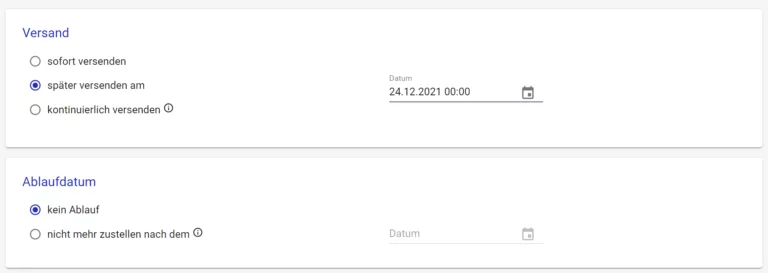
7. Best to contact B2C customers after 8pm
For operators of B2C websites, the evening hours are particularly suitable for achieving high click rates with push messages. On the one hand, internet use in the evening is quite common, especially with mobile devices, and on the other hand, 90 per cent of short messages are sent during the day, so you can legitimately hope that the competition is actually asleep after 8 pm.
8. Segment your recipients
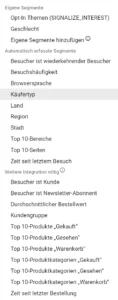
The more relevant the push messages, the more likely users are to interact with them. This requires that the appropriate recipients are always targeted. The basis for segmentation is provided by behavioural data, i.e. what the user clicks on the website, which items they put in the shopping cart or when they last visited the site. The combination of various such criteria enables granular target group clusters for precisely matching push messages. These then achieve significantly higher click rates (4.8 percent) than messages that are sent to all recipients (3.4 percent).
9. Automate your push marketing
By defining triggers that trigger the sending of a web push message, even multi-level campaigns can be set up. On the one hand, user actions can serve as triggers, such as downloaded documents or articles that have been placed in the shopping cart but not purchased. On the other hand, the trigger can also come from the company, for example when an item is back in stock or the customer’s birthday is coming up. Generally speaking, such automated dispatch workflows in push marketing ensure more than twice as high click rates as those sent manually.
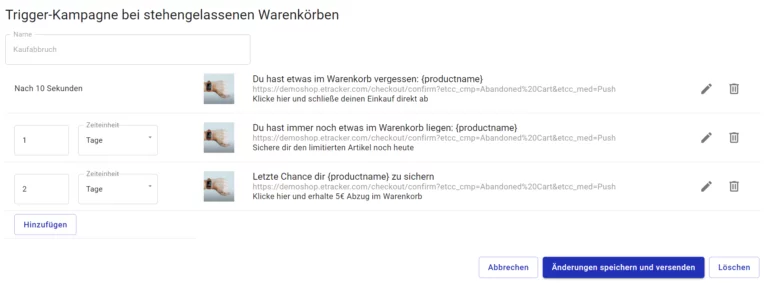
10. Score with emojis
It is impossible to imagine social media and messenger services without them and they are also popular in push marketing: emojis. Those who add emojis to their push messages can look forward to an average of 50 percent more clicks. A clear thumbs-up for emojis in push marketing!
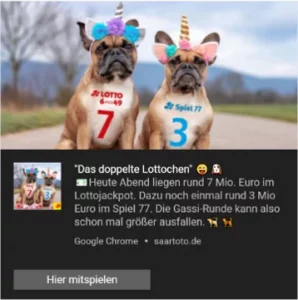
11. Send push messages continuously
Push messages are suitable for communicating daily news and offers as well as longer-term relevant content. With a continuous sending of push notifications, not only the current recipients are reached, but also those who agree to receive them on subsequent days. With longer-lasting content, you achieve a click-through rate that is one and a half times higher than with one-off messages. So you not only reach more recipients, but also increase the attractiveness of your messages.
Conclusion: Attractive opt-in and click rates in push marketing
For online marketers, push notifications are an optimal complement or alternative to email and newsletter marketing. Especially for snackable content with links to further content, web push offers the optimal communication channel. This way, customers and prospects see messages where they look most often: on their screen, whether desktop or mobile device and even in lock mode.

